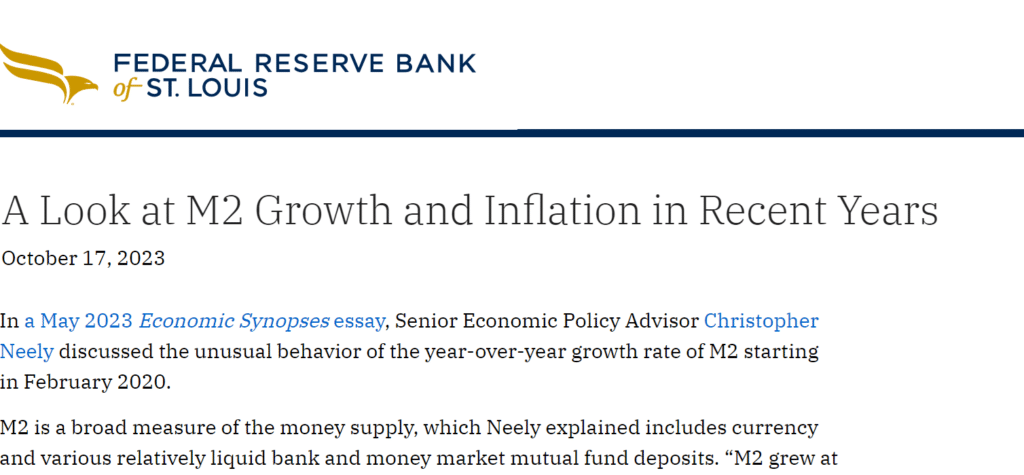" Inflation and the Fed's Response: The Impact of $80 Crude "
- Publication Date: 02/18/2024
Executive Summary
As markets ascend to unprecedented highs, with both the NYSE and Nasdaq Composite reaching historical levels, we are witnessing a period of notably confused market dynamics. The investment community is sharply divided: one faction views the current surge as a significant recovery, driven by a super secular technological bull market led by AI advancements; the other believes the disruptions since 2020, which profoundly affected global dynamics, have not yet been fully surmounted.
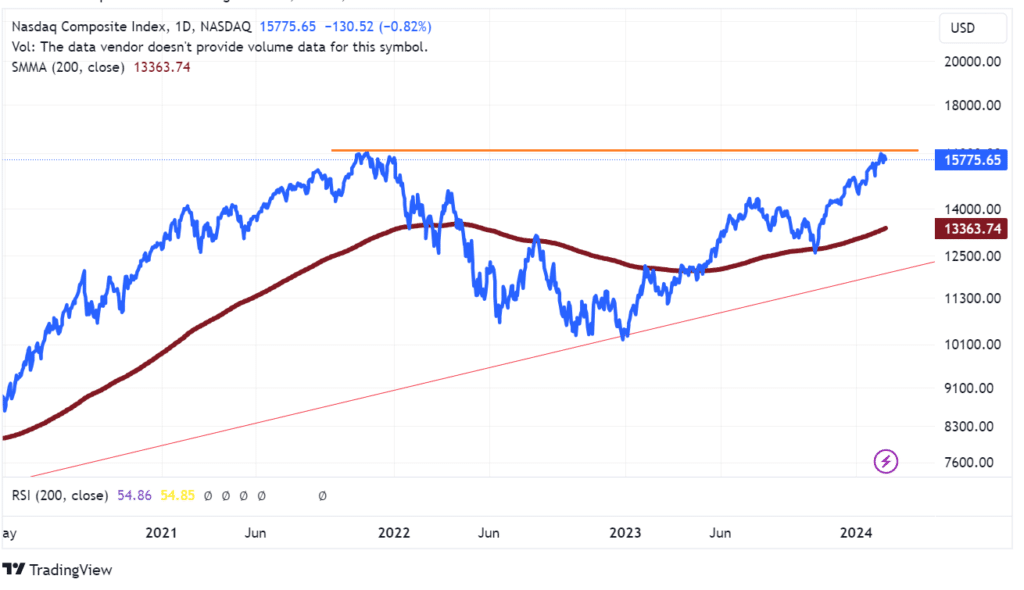
Amidst these complex dynamics, several critical topics have emerged that we believe directly influence the investment landscape, creating a domino effect where developments in one area precipitate changes in another. In this brief analysis, we revisit the potential for inflation rates to remain above 3% and the impact of rising crude oil prices on this trend. We also consider the challenging decisions the Federal Reserve might face in managing the long-term prosperity of the financial markets and, crucially, the well-being of both U.S. and global consumers.

The global economy's trajectory towards recovery has been fraught with challenges, notably the inflation trap and geopolitical tensions. Investors, buoyed by declining inflation trends, entertain the notion of a smooth transition towards economic stabilization. However, the shadow of economic slowdown and job market vulnerabilities looms large, further complicated by the specter of rising interest rates. Notably, the disparity between the market's expectations for rate cuts and the Federal Reserve's more conservative stance has led to significant market movements, with major indices experiencing rallies unprecedented in their magnitude within a short span.
Crude Oil's Impact on Inflation
As markets continue to navigate through the economic aftermath of recent years, a confluence of factors has ushered in a period of significant volatility and uncertainty. Among these, two critical developments have taken center stage: disappointing inflation numbers and an unexpected downturn in retail figures last week. These events have cast a spotlight on an alarming trend - the rising trajectory of crude oil prices, which has emerged as a red flag signaling potential economic turbulence ahead.
The Crude Awakening: Oil Prices and Economic Signals
In mid-2023, we witnessed a sharp escalation in oil prices, soaring from $70 to $90 within a mere two months. This surge compelled the Federal Reserve to adopt a more hawkish stance, effectively putting a halt to the ongoing market rally. As we tread into familiar territory, with oil prices once again ascending beyond their 200-day moving average, the echoes of 2023's challenges resonate with increasing urgency. The significance of this trend cannot be overstated, given energy prices' pivotal role in the Consumer Price Index (CPI) and their susceptibility to geopolitical tensions in oil-rich regions such as the Middle East and Russia, which collectively account for approximately 30% of global oil production.
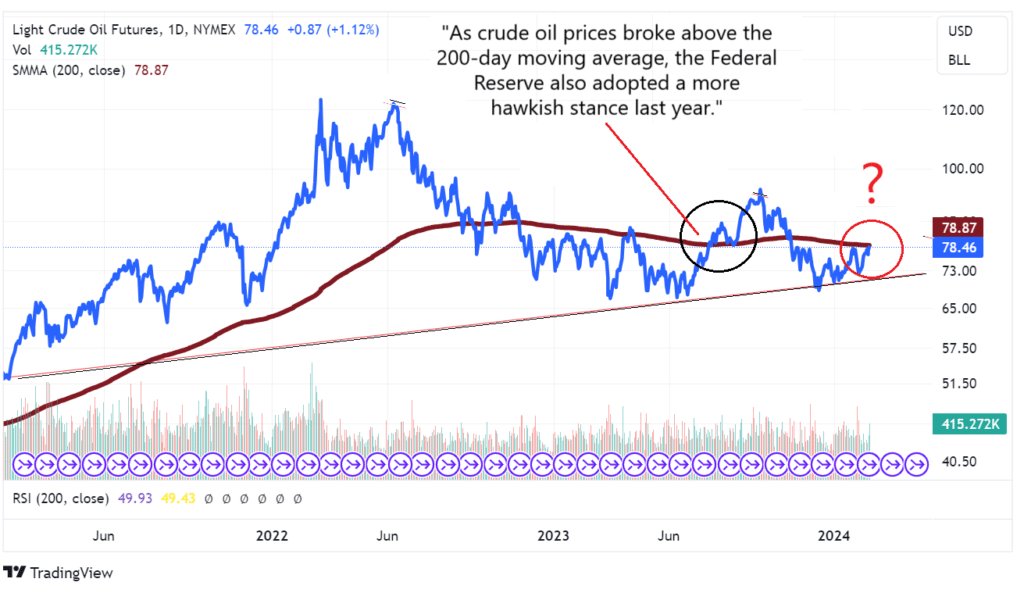
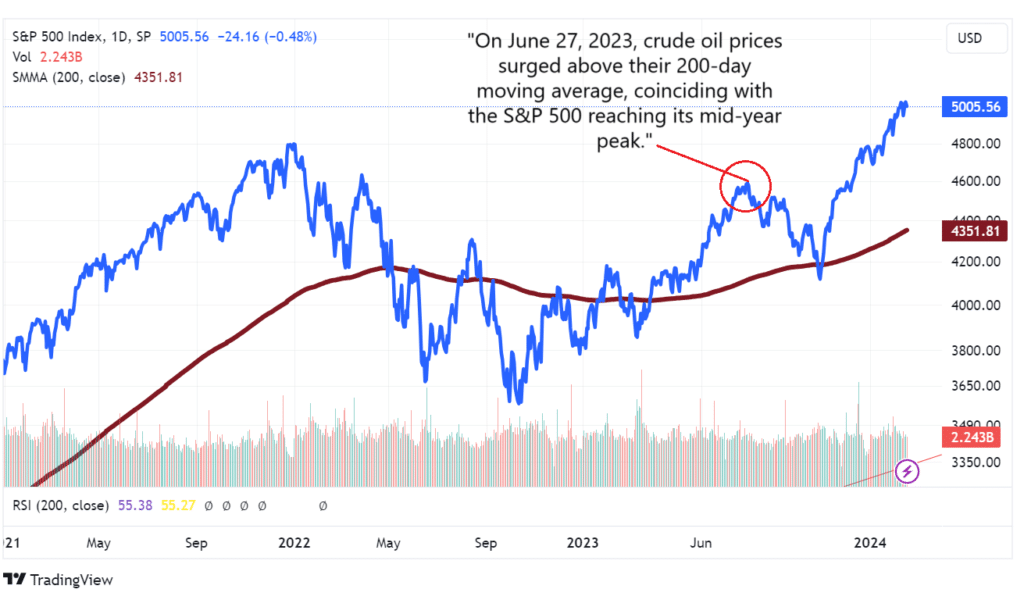
The resurgence of oil prices to $80, coupled with last month's hotter-than-expected CPI figures, begs the question: what impact will the escalating energy market have on future CPI readings? While the answer remains complex, the trajectory points towards an economic slowdown, with inflation risks poised to ascend once more.
The Fed's Liquidity Dilemma: Balancing Growth and Inflation
At the heart of this predicament lies the Federal Reserve's response to the unprecedented economic downturn triggered by the pandemic in February 2020. In an effort to stabilize the global economy, the Fed injected an extraordinary amount of liquidity into the market, leading to an unprecedented rapid recovery in employment figures unseen even during historical crises such as the 1930s. This influx of liquidity, while instrumental in curbing the initial economic fallout, has inadvertently fueled inflationary pressures, maintaining inflation levels above the 3% threshold even amidst economic deceleration.
M2 Historical Money Supply Trend since 2000
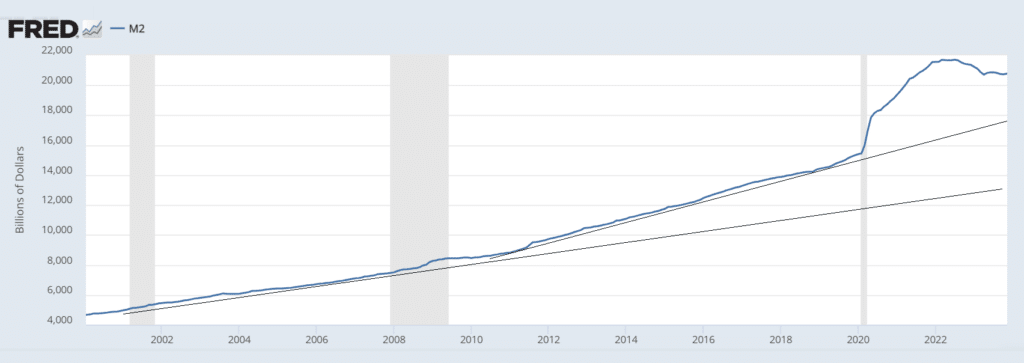
The Fed's decision to increase the M2 money supply from $15 trillion to $21.6 trillion in April 2022, marking a staggering 40% rise in just two years, underscores the delicate balancing act between stimulating economic growth and restraining inflation. Despite efforts to taper the M2 money supply, the reduction to $20 trillion still significantly exceeds historical averages, perpetuating inflationary dynamics.
"Reviewing the historical CPI excluding food and energy chart since 2000 below, the impact of excess money supply on CPI is evident. This dynamic persists, with CPI excluding food and energy remaining at historically high levels due to the still unreasonable levels of M2 money supply."
Historical CPI less food and Energy since 2000
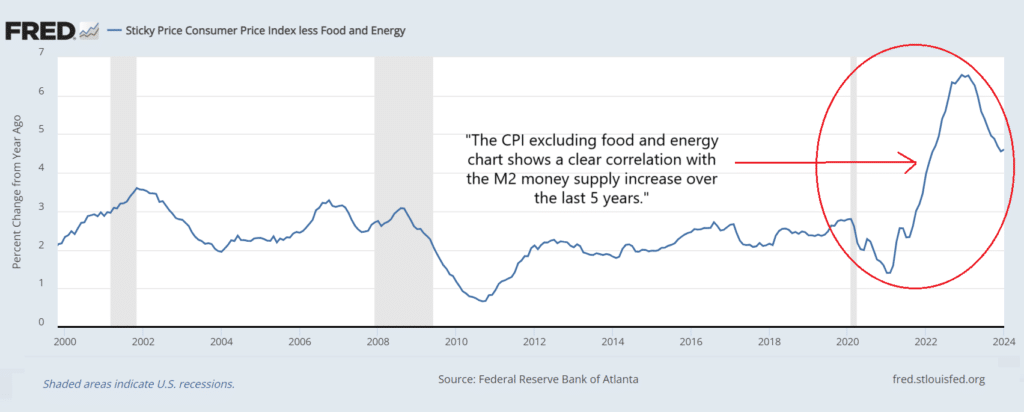
As energy prices rise again, they're expected to push the CPI excluding food and energy higher, negatively impacting consumers who are already burdened by high interest payments.
As we navigate the complex interplay between a vibrant commodities market and rising inflation, the Federal Reserve stands at a pivotal juncture. The challenge ahead involves delicately balancing economic policy to not only temper inflation but also foster the long-term health and stability of both domestic and international economies. This intricate path requires a sophisticated grasp of the nuanced interconnections among monetary policy, energy markets, and the wider economic framework.
Federal Reserve's article: M2 Growth and Inflation
To gain deeper insights into the M2 money supply and its correlation with the CPI, we invite you to explore the Federal Reserve's article. Simply click on the headline below for more information.
Conclusion
In conclusion, the recent trends in energy prices and their impact on the Consumer Price Index (CPI) excluding food and energy underscore a challenging economic environment. As energy costs climb, they not only drive up the CPI but also exacerbate the financial strain on consumers grappling with elevated interest payments. This dynamic highlights the intricate relationship between energy prices, inflationary pressures, and consumer affordability. It is imperative for policymakers and stakeholders to closely monitor these trends and implement measures to mitigate the adverse effects on the economy and consumer well-being. The resilience of the economy and the financial health of consumers depend on a balanced approach to managing inflation and ensuring energy affordability.
Warm Regards
Sam Sacli
Editor
CONTACT US
The Scholarch LLC
1111B Governors Ave. STE 7059 Dover, DE 19904
research@thescholarch.com
Disclaimer: The Scholarch Reports upholds the highest standards of integrity and transparency in all its publications. We unequivocally assert that the content within our research articles is authentic and genuine, steadfastly adhering to the principles of impartiality and objectivity. Our commentary and analysis are conducted disinterestedly, devoid of any personal or financial interests that might potentially skew our evaluations. It is our policy not to invest in the stock ideas we report on. Should an exception arise, it will be clearly disclosed at the conclusion of our reports or articles. The insights and assessments provided in our research articles and reports are the culmination of meticulous research, intended solely for informational and educational purposes. They are not promotional in nature and should not be interpreted as an endorsement or solicitation to buy or sell any stocks, financial products, or services. The content provided on our website or in our reports does not constitute investment advice or an endorsement of any specific investment strategy. While we endeavor to provide accurate and up-to-date information, The Scholarch LLC and its affiliates do not guarantee its completeness or accuracy. We shall not be held accountable for any losses incurred from reliance on this information. Past performance is not a reliable indicator of future results. Readers are strongly advised to conduct their own due diligence and consult with a professional advisor before making any investment decisions. The Scholarch LLC does not possess a financial advisory license and therefore does not offer personalized financial advice. This website and our reports may include links to third-party websites and information; The Scholarch LLC is not liable for their content or accuracy. We appreciate your trust in The Scholarch Reports. Thank you for reading our disclaimer.


